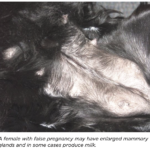How To Heal A Dog Wound Fast At Home
Healing a Dog Wound Fast at Home: Tips and Tricks for Loving Pet Owners
Dogs are wonderful companions, but accidents can happen, and sometimes they get hurt. If your furry friend has a wound, you want to help them heal as quickly and comfortably as possible. While some injuries may require veterinary care, many minor cuts, scrapes, and bites can be treated at home with proper first aid and follow-up care. In this article, we will share some practical advice on how to heal a dog wound fast at home.
Introduction: Why It Matters to Heal Your Dog’s Wound Fast
When your dog gets injured, it’s not just a matter of physical pain or discomfort. Dogs can’t tell us how they feel in words, but they do communicate through their body language, behavior, and expressions. A wounded dog may be restless, anxious, or depressed. They may lick or chew the affected area excessively, which can lead to infection and delay healing. They may also become aggressive or defensive if someone touches the wound or tries to clean it without their consent. Moreover, an untreated wound can worsen over time and cause complications such as abscesses, sepsis, or even amputation. Therefore, it’s essential to take care of your dog’s wound promptly and effectively.
Subtitles:
– Assessing the Severity of Your Dog’s Wound
– Gathering the Supplies You Need for Dog Wound Care
– Cleaning Your Dog’s Wound Safely and Effectively
– Dressing Your Dog’s Wound Properly with Bandages or Wraps
– Administering Medications or Supplements to Help Heal Your Dog’s Wound
– Monitoring Your Dog’s Healing Progress and Adjusting Your Care Plan Accordingly
Assessing the Severity of Your Dog’s Wound
The first step in healing your dog’s wound is to determine how serious it is. If the wound is bleeding profusely, or if your dog is in shock, unconscious, or having trouble breathing, seek emergency veterinary care immediately. These signs may indicate internal bleeding, organ damage, or other life-threatening conditions that require professional intervention.
If the wound is not actively bleeding and your dog is conscious and responsive, you can try to assess its size, location, depth, and type. A superficial scratch on the skin may only need gentle cleaning and no dressing, while a deep puncture or tear in the flesh may require more intensive care. Look for signs of infection such as redness, swelling, discharge, odor, or fever. If you notice any of these symptoms, consult your vet before treating the wound at home.
Gathering the Supplies You Need for Dog Wound Care
Before you start cleaning or dressing your dog’s wound, make sure you have all the necessary supplies at hand. Here are some items you may need:
– Latex gloves or finger cots to protect your hands from contamination
– Sterile gauze pads or squares to clean and cover the wound
– Cotton balls or swabs to apply solutions and ointments
– Hydrogen peroxide or saline solution to flush out debris and bacteria
– Antiseptic spray or cream to prevent infection and promote healing
– Non-stick adhesive tape or self-adherent bandages to secure the dressing
– Elizabethan collar (cone) or alternative device to prevent licking or biting
You can buy most of these items at a pet store or pharmacy. Make sure they are suitable for dogs and not expired. Also, check with your vet if you have any doubts about their safety or efficacy.
Cleaning Your Dog’s Wound Safely and Effectively
Once you have prepared your supplies and put on your gloves or finger cots (if needed), it’s time to clean your dog’s wound. Here are some steps to follow:
– Gently restrain your dog and soothe them with a calm voice, treats, or toys.
– If the wound is on the limb or tail, you may need to apply a tourniquet above it to control bleeding. Use a soft cloth or elastic bandage, but not too tight. Release the tourniquet every few minutes to avoid tissue damage.
– Trim any hair around the wound with scissors or clippers. This will make cleaning easier and prevent matting or tangling.
– Flush the wound with hydrogen peroxide or saline solution using a syringe, squeeze bottle, or spray bottle. Aim for a gentle stream that can dislodge dirt, debris, and bacteria without causing pain or damage. Repeat this step several times until the fluid runs clear.
– Blot the wound gently with sterile gauze or cotton balls to remove excess moisture. Avoid rubbing or scrubbing as this can irritate the tissue and delay healing.
– Apply an antiseptic spray or cream to the wound according to the instructions on the label. Some common products include chlorhexidine, povidone-iodine, neomycin-bacitracin-polymyxin, or silver sulfadiazine. These substances can kill germs and promote tissue regeneration. Be careful not to get them in your dog’s eyes, mouth, nose, or ears.
– Cover the wound with sterile gauze pads or squares that are large enough to extend beyond its borders. You can secure them with non-stick adhesive tape or self-adherent bandages that wrap snugly but not too tight. Make sure there are no wrinkles, gaps, or pressure points that can impede blood flow or cause discomfort.
Dressing Your Dog’s Wound Properly with Bandages or Wraps
The type of dressing you use for your dog’s wound depends on its location and shape. Here are some options:
– Open wound: If the wound is small, superficial, and not bleeding, you may not need to dress it. You can clean it with saline solution or hydrogen peroxide and let it air dry. However, if your dog is likely to lick or scratch the wound, or if it’s exposed to dirt or debris, you can cover it with a non-adhesive bandage such as Telfa or gauze squares held in place by adhesive tape or self-adherent wrap. This will protect the wound from further damage and keep it clean.
– Closed wound: If the wound is large, deep, or has been sutured by a vet, you may need to dress it more extensively. Start with a sterile gauze pad or sponge that covers the entire wound. Then apply a layer of cotton padding around the gauze pad to cushion the area and absorb any fluids. Finally, wrap the dressing snugly but not too tight with a self-adherent wrap that sticks to itself but not to fur or skin. Make sure you leave some space for air circulation and check the dressing regularly for signs of swelling, odor, or discharge.
Administering Medications or Supplements to Help Heal Your Dog’s Wound
In addition to proper cleaning and dressing, your dog may benefit from some medications or supplements that can enhance their healing process. Here are some examples:
– Antibiotics: If your dog has an infected wound or a high risk of infection due to immunosuppression or exposure to dirty environments, your vet may prescribe antibiotics such as amoxicillin, cephalexin, doxycycline, or clindamycin. These drugs can kill bacteria and prevent them from spreading.
– Pain relievers: If your dog is in pain due to their wound or any related conditions such as arthritis or surgery, your vet may recommend pain relievers such as tramadol, gabapentin, carprofen, or fentanyl. These drugs can reduce pain and inflammation without causing sedation or other side effects.
– Anti-inflammatory agents: If your dog has inflammation due to their wound or any related conditions such as allergies or autoimmune disorders, your vet may prescribe anti-inflammatory agents such as prednisone, dexamethasone, or cyclosporine. These drugs can suppress the immune response and reduce swelling and redness.
– Nutritional supplements: If your dog has a poor appetite or nutritional status due to their wound or any related conditions such as cancer or old age, your vet may suggest nutritional supplements such as omega-3 fatty acids, glucosamine-chondroitin, vitamin E, or probiotics. These substances can boost the immune system and support tissue repair.
Note that you should not give any medications or supplements to your dog without consulting your vet first. Some drugs can be toxic to dogs if given at the wrong dose or frequency. Also, some supplements may interact with other medications your dog is taking or have unproven benefits.
Monitoring Your Dog’s Healing Progress and Adjusting Your Care Plan Accordingly
Once you have treated your dog’s wound and started them on any necessary medications or supplements, it’s important to monitor their healing progress and adjust your care plan accordingly. Here are some tips:
– Check the dressing regularly for signs of moisture, odor, discharge, swelling, or loosening. If you notice any of these symptoms, change the dressing immediately and clean the wound again.
– Watch your dog’s behavior for signs of discomfort, agitation, lethargy, or abnormal movements. If you notice any of these symptoms, consult your vet as they may indicate an underlying complication or adverse reaction.
– Keep your dog from licking or biting the wound by using an Elizabethan collar (cone) or alternative device such as a soft muzzle or inflatable collar. This will prevent them from reopening the wound or introducing germs.
– Make sure your dog gets enough rest, hydration, and nutrition. Provide them with a comfortable bed, fresh water, and high-quality food that contains sufficient protein, vitamins, and minerals. Avoid giving them sugary or salty treats that can interfere with healing or cause other health problems.
– Follow up with your vet as scheduled or as needed. Your vet may want to examine your dog’s wound in person, perform laboratory tests or imaging studies, or adjust their medications or supplements based on their response.
Conclusion: Love and Care Can Help Heal Your Dog’s Wound Fast at Home
Healing a dog wound fast at home is not rocket science, but it does require some knowledge, skills, and dedication. By following the tips and tricks we have shared in this article, you can help your furry friend recover from their injury safely and comfortably. Remember to assess the severity of the wound first, gather the supplies you need for dog wound care, clean the wound safely and effectively, dress the wound properly with bandages or wraps, administer medications or supplements to help heal your dog’s wound if necessary, and monitor your dog’s healing progress and adjust your care plan accordingly. Most importantly, show your love and care to your dog every step of the way. Dogs are resilient creatures who can bounce back from adversity with the help of their human companions. By being there for them when they need you most, you can strengthen the bond between you and your dog and enjoy many more happy moments together.



